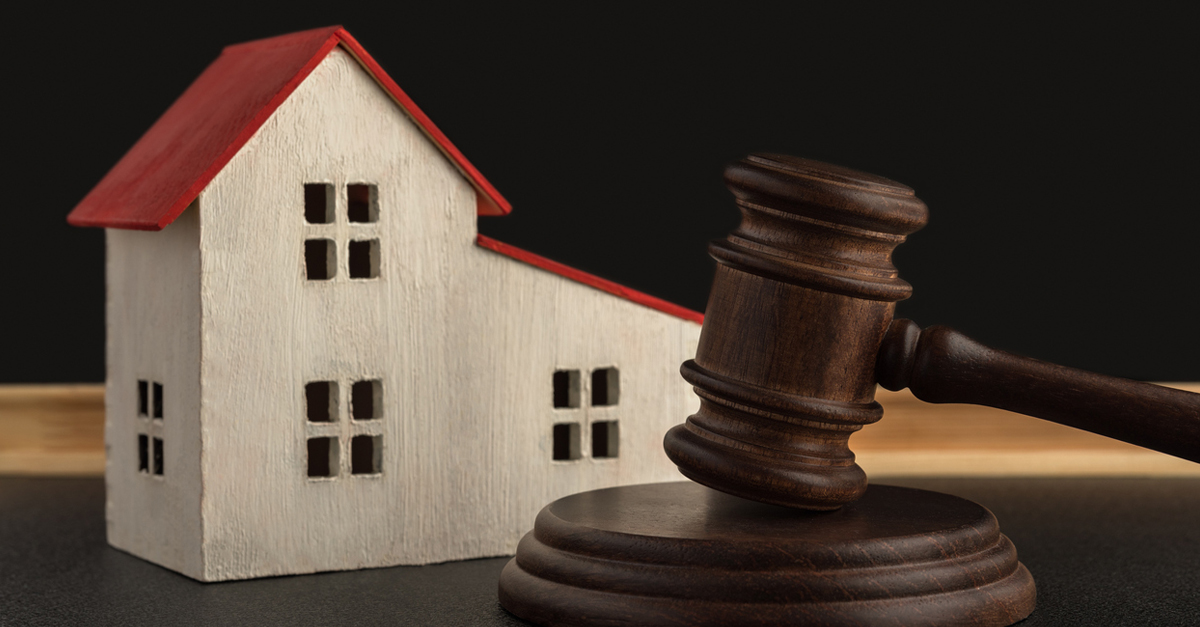
When you fall behind on your mortgage payments, you may be concerned about mortgage foreclosure and wonder if bankruptcy can help stop a foreclosure process.
In Canada, bankruptcy and mortgage foreclosure are two different legal proceedings. In this guide, I’ll explain the difference between bankruptcy and foreclosure, how each affects your ability to keep your home and whether bankruptcy proceedings can stop a foreclosure or prevent your mortgage lender from seizing your property.
Table of Contents
Secured vs unsecured debt
In the world of credit, there are two types of debt: unsecured and secured debt.
Unsecured debt is any debt where you do not have an asset as your collateral, for example, a credit card. When you are in default on an unsecured debt, your creditor may send or sell your account to a collection agency, and that company will call you to collect. They may attempt to sue you for what you owe them and try to garnishee your wages, but that’s about all they can do. An unsecured lender has no hold on your things. They have no legal rights to repossess your assets.
Secured debts do have an item behind them. They have collateral behind the loan so that if you do not pay the creditor, they can seize your property. A mortgage is a secured debt where your house acts as collateral and provides security to the lender in case of default. If you don’t pay your mortgage, the mortgage lender will call you, but as a secured creditor, they have an extra power they can use to recover their money: they can foreclose on your home.
How mortgage foreclosure works in Canada
Foreclosure can happen when the mortgage lender isn’t getting paid. If you stop making your mortgage payments, your mortgage lender can take you to court and sue you, and if the court agrees, the lender can take over title to your property.
A foreclosure is the transfer of full ownership in a property to the mortgage lender. In a foreclosure process, the mortgagor, or homeowner, gives up all rights to the property, including any equity value built up in the home. Once your mortgage lender forecloses on your property, they own it. They can do what they want with it, which may mean fixing it up, renting it out, or most likely selling it.
Foreclosure is a lengthy and costly process. Your lender will first file a Statement of Claim with the court, to which you have 20 days to respond with a defense. After that period, your mortgage may be declared in default. Your lender will next ask for a remedy in the form of a foreclosure order. If the court feels there is any chance you can catch up, the court can issue a Redemption Order. The Redemption Order gives you a stated period of time to get current with your mortgage payment.
Usually, the redemption period is six months. You can ask the court to extend the time, and the lender may ask the court to shorten the time.
The key here is you can stop foreclosure proceedings if you either get current with your mortgage payments or pay off the mortgage during this time frame.
Remember, everyone wants a win here. The court does not want to see you out on the street, and the lender just wants their money. If the court can find a way for you to stay in your home and the lender to receive their money, the court will take that route. If a lender can get you to make payments, they will generally choose this option over the foreclosure process.
It’s in your best interest and the lender’s best interest to come up with a plan that works for both parties.
This is where bankruptcy can help.
Bankruptcy as a preventative measure
Bankruptcy does not deal with secured debt, so filing bankruptcy itself will not legally stop a foreclosure order. However, a bankruptcy proceeding can work as a proactive decision to eliminate other problem debt and improve your cash flow enough that you can afford to catch up on your mortgage payments.
When you file bankruptcy, you don’t necessarily have to lose your home. If you can keep your mortgage payment current, Canadian bankruptcy law protects you. Rules around bankruptcy and mortgages say that a secured lender such as your mortgage holder may not cancel your loan just because you’ve declared bankruptcy or filed a consumer proposal.
In any bankruptcy proceeding, you do have to deal with any non-exempt equity in your home. For example, in Ontario, if the equity in your home is above $10,000, you will have to arrange to pay the equivalent to your Licensed Insolvency Trustee if you want to keep your house. To make these payments more affordable, you can consider a consumer proposal as an alternative to bankruptcy. Bankruptcy and home equity laws vary by province, so it is important to speak with a Licensed Insolvency Trustee about your situation.
Foreclosure vs Power of Sale
As I noted earlier, in a foreclosure, the lender obtains legal title to the property. This means any profits or equity from the sale, go to the lender. However, the foreclosure process does not give the lender the right to sue for any shortfall. If the home sells for less than the mortgage balance owing, your mortgage lender posts a loss and cannot look to you to recover the difference.
It is because of this inability to sue for a shortfall, combined with a very long and expensive process, that we see very few foreclosures in Canada. Add to that, any borrower with equity in their home will work hard to find a way to bring their mortgage current rather than lose that equity through foreclosure.
What is more common in Canada as a way to collect on mortgage arrears is a process called a power of sale. In a power of sale, the lender goes to court to get permission to evict you from the property and then sell it. They do not own title to your home; instead, the court gives the lender the “power” to sell the property.
The potential financial outcomes for the homeowner in a power of sale vs foreclosure are very different. In a foreclosure proceeding, any “profits” go to the lender, but in a power of sale, if there is money left over after paying the mortgage and costs, it gets returned to the homeowner. Conversely, if there is a shortfall, a lender has no recourse under a foreclosure but does retain the right to sue the borrower in a power of sale.
Foreclosure is rarely used with residential real estate, while a power of sale is more common.
Bankruptcy to deal with mortgage shortfall
When you declare bankruptcy in Canada and are underwater in your mortgage, the difference between the mortgage balance and sale value, or shortfall, is now an unsecured debt. There’s not enough collateral to back it up. In a bankruptcy or consumer proposal where you give up your house, you do not have to pay for the difference between what you owe and what the home is worth.
Given the real estate market in Canada, most shortfalls involve insured mortgages, which involve high ratio mortgages. In this case, it is generally the mortgage insurer (CMHC or Genworth) that will pursue you. CMHC is very slow to act; I’ve seen people pursued ten years after the house was sold. However, that does not mean you should rely on this and wait. CMHC is the government, so they can seize tax refunds to get their money.
What are your options if you are behind on your mortgage?
If you have fallen behind on mortgage payments, it’s in your best interest and the lender’s best interest to come up with a plan that works for both parties. Lenders just want their money, and you may just want to keep your home. If you can’t catch up, there are other options to stop or deal with the financial results of foreclosure for mortgage arrears.
Ask for a payment deferral. This was a common occurrence during COVID-19, but mortgage lenders have been granting short term deferrals or mortgage extensions in extenuating circumstances long before the recent economic crisis.
Renegotiate the mortgage. If you have a 15-year amortization, the lender may agree to a loan modification to restructure your mortgage under a 25-year amortization, for example, and include all arrears in the new mortgage. You now have no arrears and a lower monthly mortgage payment because it’s stretched out for a longer time.
Find a new lender. If your lender won’t renegotiate, get a payout figure and consider a new mortgage with another mortgage lender. Be aware that alternative, private mortgages come with a higher interest rate to compensate the lender for the added risk. Refinancing is more viable if you have higher equity in the home.
Sell the house yourself before the bank can foreclose. You may get a better price than your lender, but more importantly, if you expect there to be positive equity after the sale, you want to retain any potential capital gains for your own benefit.
File a consumer proposal and keep your home. If you are struggling with your mortgage payments because of other debt problems, filing a bankruptcy or consumer proposal before foreclosure can help you clean up your finances and make homeownership more sustainable.
Walk away, and let the bank take possession. Sometimes we buy more home than we can afford. And if the value of your home drops below your mortgage balance, you may be better walking away before the foreclosure and letting the bank file an unsecured claim in your bankruptcy or proposal.
If you’re struggling with debt, we can help you explore debt relief options. Bankruptcy is one solution, but it’s not your only solution.





